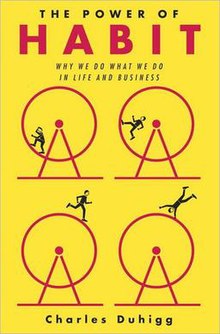
Paul Henry O'Neill was an American businessman and government official who served as the 72nd United States secretary of the treasury for part of President George W. Bush's first term, from January 2001 to December 2002. He was fired in December 2002 for his public disagreement with the administration. Prior to his term as secretary of the treasury, O'Neill was chairman and CEO of industrial giant Alcoa and chairman of the RAND Corporation.

Wernicke-Korsakoff syndrome (WKS) is the combined presence of Wernicke encephalopathy (WE) and Korsakoff syndrome. Due to the close relationship between these two disorders, people with either are usually diagnosed with WKS as a single syndrome. It mainly causes vision changes, ataxia and impaired memory.
Drug rehabilitation is the process of medical or psychotherapeutic treatment for dependency on psychoactive substances such as alcohol, prescription drugs, and street drugs such as cannabis, cocaine, heroin or amphetamines. The general intent is to enable the patient to confront substance dependence, if present, and stop substance misuse to avoid the psychological, legal, financial, social, and physical consequences that can be caused.
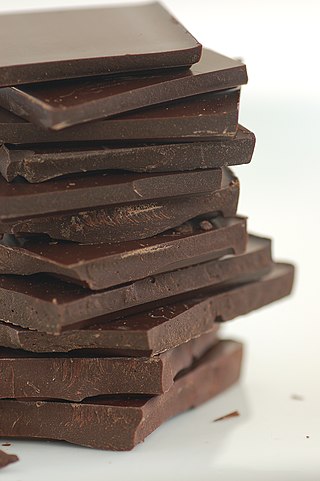
A chocoholic is a person who craves or compulsively consumes chocolate. The word "chocoholic" was first used in 1968, according to Merriam-Webster. It is a portmanteau of "chocolate" and "alcoholic". The term is used loosely or humorously to describe a person who is inordinately fond of chocolate; however, there is medical evidence to support the existence of actual addiction to chocolate. Psychoactive constituents of chocolate that trigger a ‘feel-good’ reaction for the consumer include tryptophan and phenylethylamine, which may contribute to cravings and addiction-like responses, particularly in people with specific genetic alleles. The quantity of sugars used in chocolate confections also impacts the psychoactive effects of chocolate.
Motivational salience is a cognitive process and a form of attention that motivates or propels an individual's behavior towards or away from a particular object, perceived event or outcome. Motivational salience regulates the intensity of behaviors that facilitate the attainment of a particular goal, the amount of time and energy that an individual is willing to expend to attain a particular goal, and the amount of risk that an individual is willing to accept while working to attain a particular goal.

The orbitofrontal cortex (OFC) is a prefrontal cortex region in the frontal lobes of the brain which is involved in the cognitive process of decision-making. In non-human primates it consists of the association cortex areas Brodmann area 11, 12 and 13; in humans it consists of Brodmann area 10, 11 and 47.
A food craving is an intense desire to consume a specific food, and is different from normal hunger. It may or may not be related to specific hunger, the drive to consume particular nutrients that is well-studied in animals. In studies of food cravings, chocolate and chocolate confectioneries almost always top the list of foods people say they crave; this craving is referred to as chocoholism. The craving of non-food items as food is called pica.
Claude C. Hopkins (1866–1932) was an American advertiser and author. He introduced the slogan in advertising and popularised the use of test campaigns, especially using coupons in direct mail, to properly attribute marketing spend.
Cue reactivity is a type of learned response which is observed in individuals with an addiction and involves significant physiological and psychological reactions to presentations of drug-related stimuli. The central tenet of cue reactivity is that cues previously predicting receipt of drug reward under certain conditions can evoke stimulus associated responses such as urges to use drugs. In other words, learned cues can signal drug reward, in that cues previously associated with drug use can elicit cue-reactivity such as arousal, anticipation, and changes in behavioral motivation. Responses to a drug cue can be physiological, behavioral, or symbolic expressive. The clinical utility of cue reactivity is based on the conceptualization that drug cues elicit craving which is a critical factor in the maintenance and relapse to drug use. Additionally, cue reactivity allows for the development of testable hypotheses grounded in established theories of human behavior. Therefore, researchers have leveraged the cue reactivity paradigm to study addiction, antecedents of relapse, craving, translate pre-clinical findings to clinical samples, and contribute to the development of new treatment methods. Testing cue reactivity in human samples involves exposing individuals with a substance use disorder to drug-related cues and drug neutral cues, and then measuring their reactions by assessing changes in self-reported drug craving and physiological responses.

The reward system is a group of neural structures responsible for incentive salience, associative learning, and positively-valenced emotions, particularly ones involving pleasure as a core component. Reward is the attractive and motivational property of a stimulus that induces appetitive behavior, also known as approach behavior, and consummatory behavior. A rewarding stimulus has been described as "any stimulus, object, event, activity, or situation that has the potential to make us approach and consume it is by definition a reward". In operant conditioning, rewarding stimuli function as positive reinforcers; however, the converse statement also holds true: positive reinforcers are rewarding.
A habit is a routine of behavior that is repeated regularly and tends to occur subconsciously.

Reward dependence is characterized as a tendency to respond markedly to signals of reward, particularly to verbal signals of social approval, social support, and sentiment. When reward dependence levels deviate from normal we see the rise of several personality and addictive disorders.

Is Google Making Us Stupid? What the Internet Is Doing to Our Brains! is a magazine article by technology writer Nicholas G. Carr, and is highly critical of the Internet's effect on cognition. It was published in the July/August 2008 edition of The Atlantic magazine as a six-page cover story. Carr's main argument is that the Internet might have detrimental effects on cognition that diminish the capacity for concentration and contemplation. Despite the title, the article is not specifically targeted at Google, but more at the cognitive impact of the Internet and World Wide Web. Carr expanded his argument in The Shallows: What the Internet Is Doing to Our Brains, a book published by W. W. Norton in June 2010.

Valley High School is a public high school in the city of Albuquerque, New Mexico, United States. It is part of the Albuquerque Public Schools district. The school opened in 1954 and enrolls around 1,800 students.
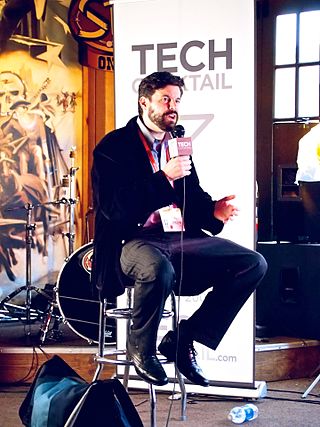
Charles Duhigg is an American journalist and non-fiction author. He was a reporter for The New York Times, currently writes for The New Yorker Magazine and is the author of two books on habits and productivity, titled The Power of Habit: Why We Do What We Do in Life and Business and Smarter Faster Better. In 2013, Duhigg was the recipient of the Pulitzer Prize for Explanatory Reporting for a series of 10 articles on the business practices of Apple and other technology companies.
Dan Hurley is an American health and medical journalist and author. He has written several books and contributed pieces to The New York Times, Wired, The Washington Post, Neurology Today and The Atlantic.

A compulsion loop or core loop is a habitual chain of activities that will be repeated by the user to cause them to continue the activity. Typically, this loop is designed to create a neurochemical reward in the user such as the release of dopamine.
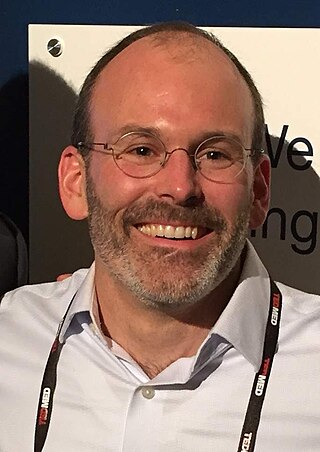
Judson Alyn Brewer is an American psychiatrist, neuroscientist and author. He studies the neural mechanisms of mindfulness using standard and real-time fMRI, and has translated research findings into programs to treat addictions. Brewer founded MindSciences, Inc., an app-based digital therapeutic treatment program for anxiety, overeating, and smoking. He is director of research and innovation at Brown University's Mindfulness Center and associate professor in behavioral and social sciences in the Brown School of Public Health, and in psychiatry at Brown's Warren Alpert Medical School.
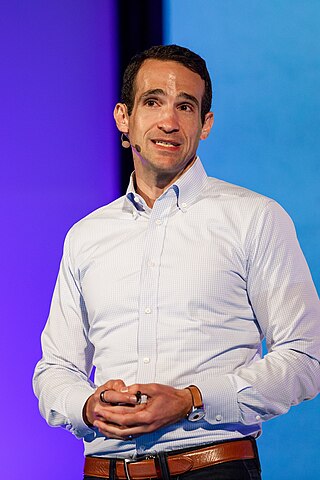
Nir Eyal is an Israeli-born American author, lecturer, and investor known for his bestselling book, Hooked: How to Build Habit-Forming Products.

Dopamine fasting is a form of digital detox, involving temporarily abstaining from addictive technologies such as social media, listening to music on technological platforms, and Internet gaming, and can be extended to temporary deprivation of social interaction and eating. The concept was proposed by Dr. Cameron Sepah.
